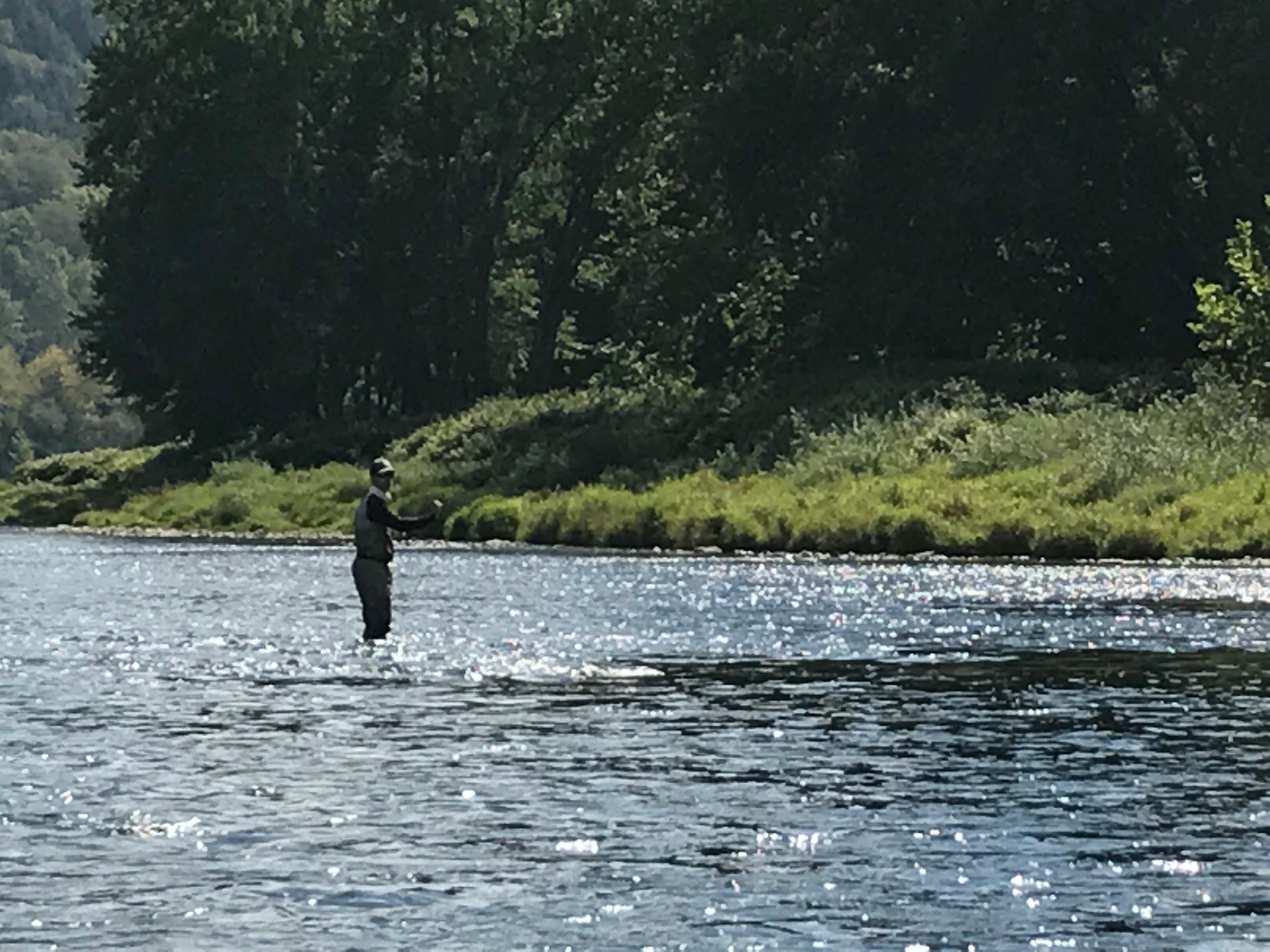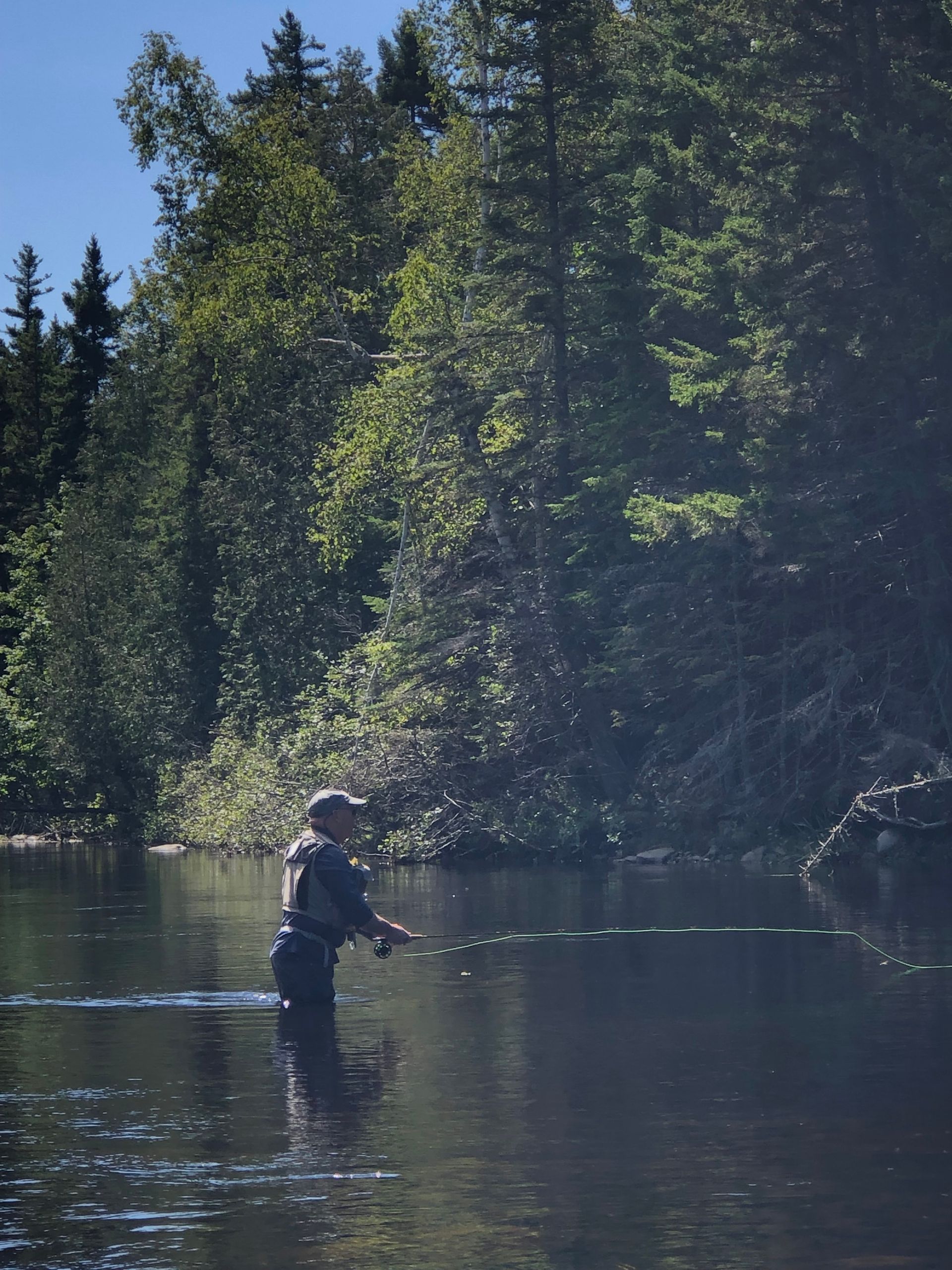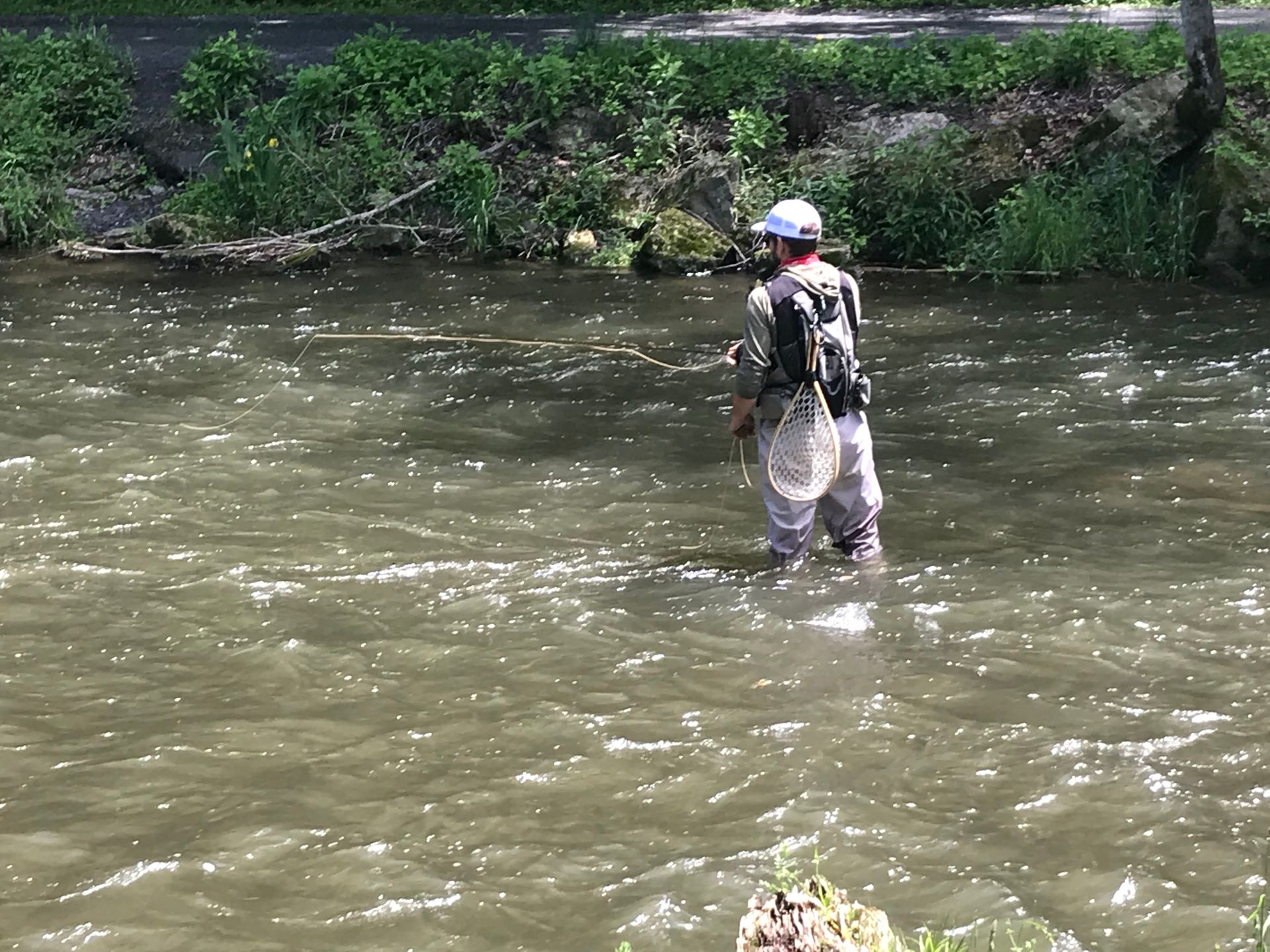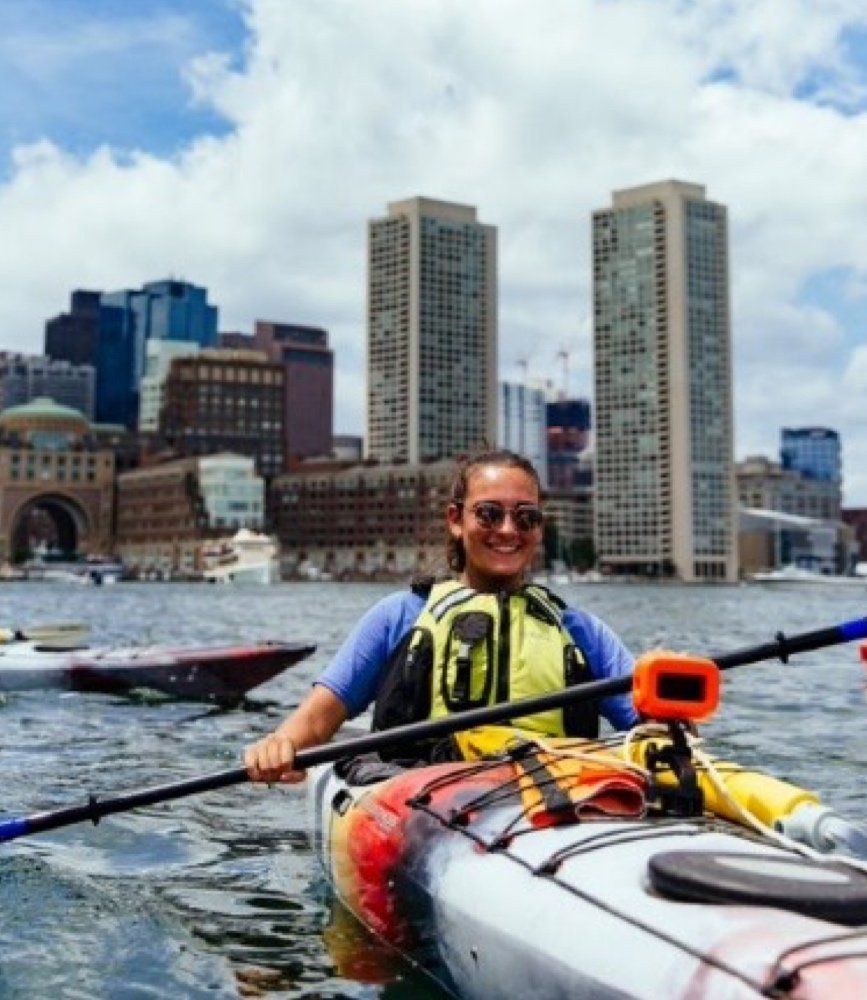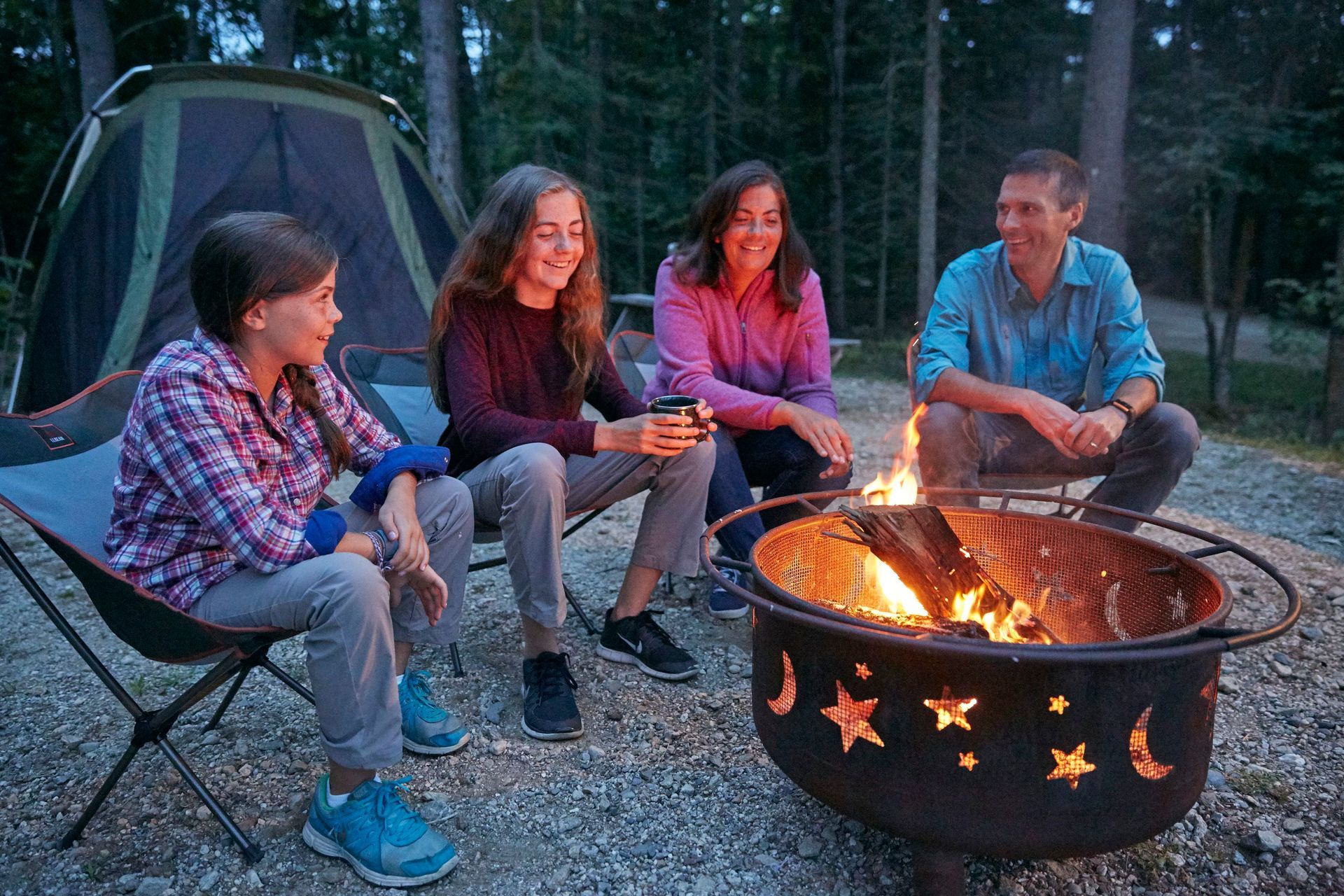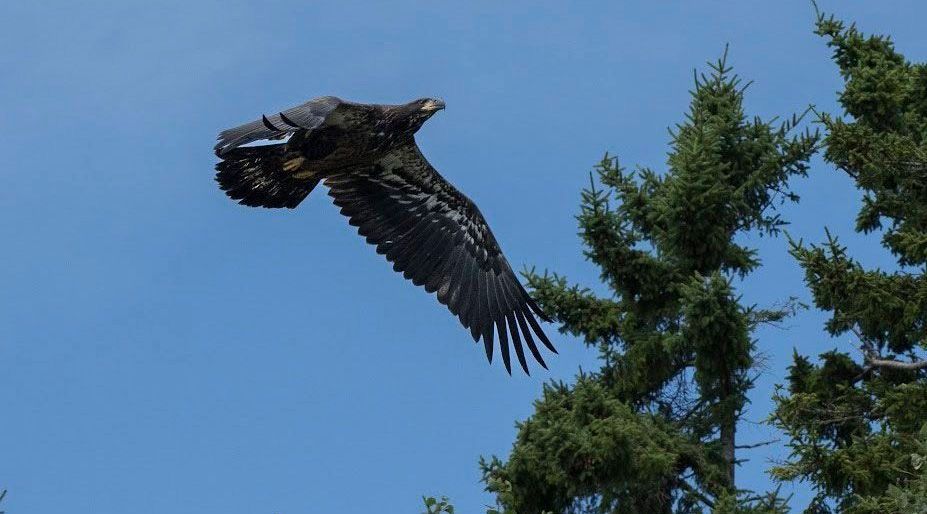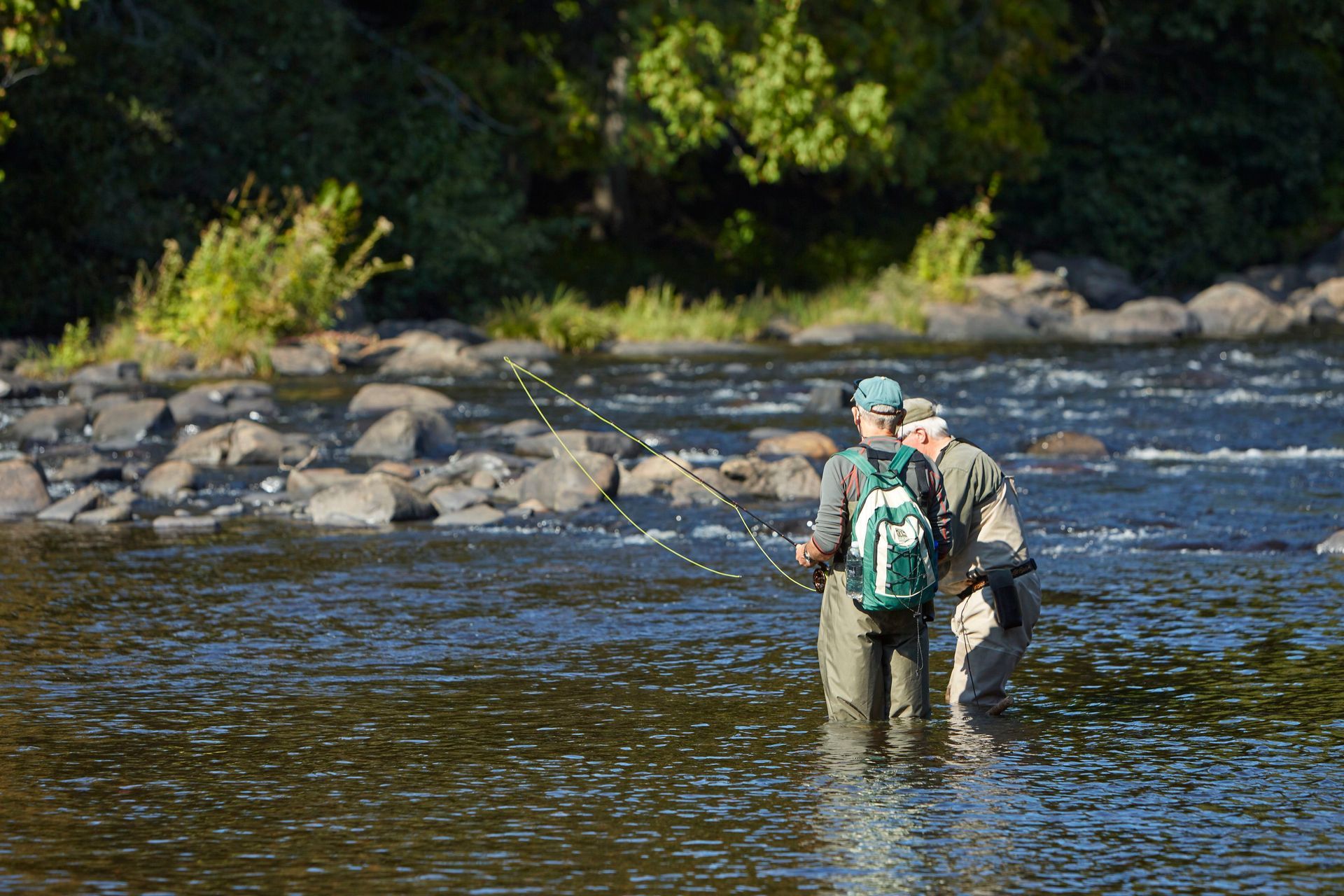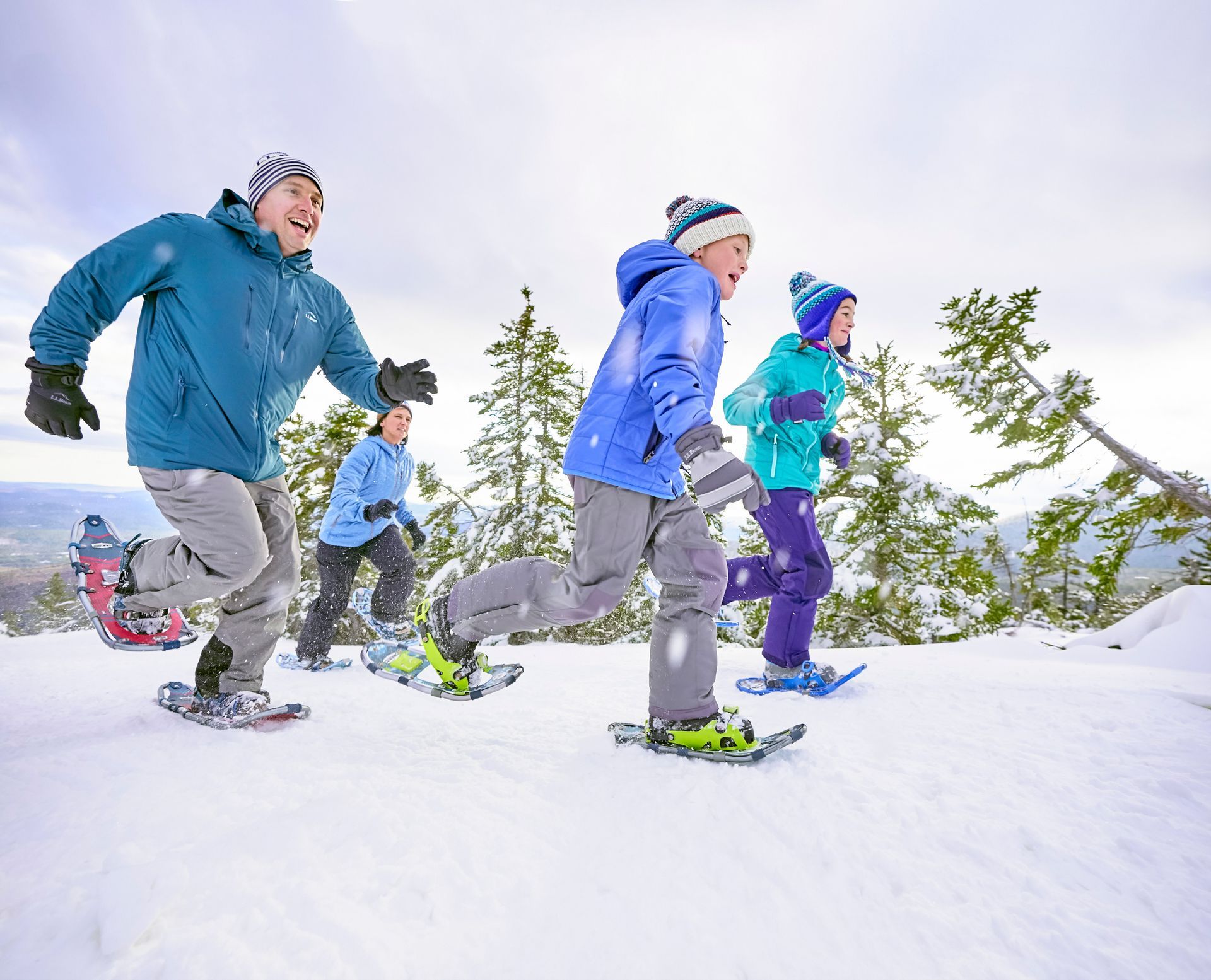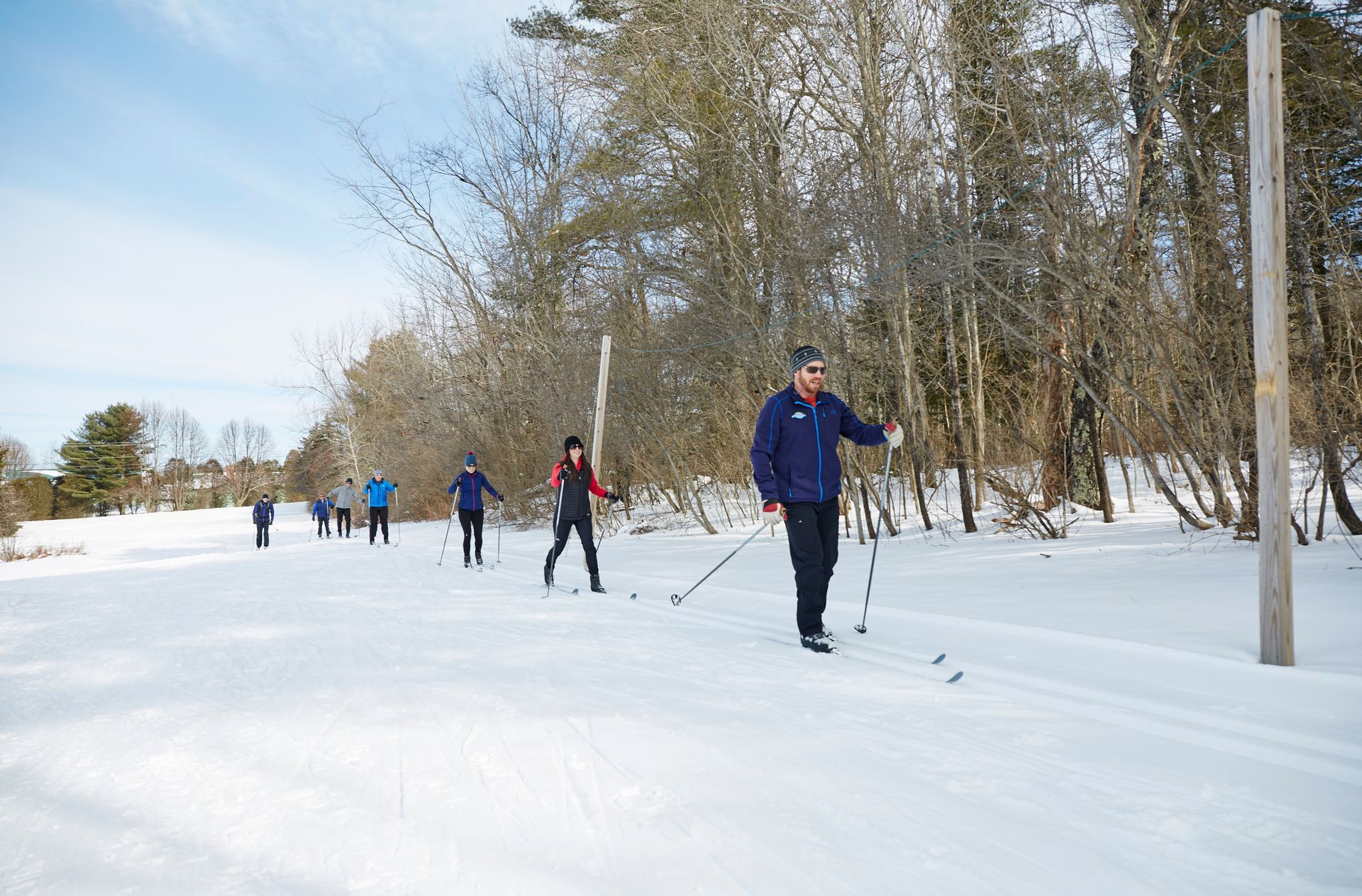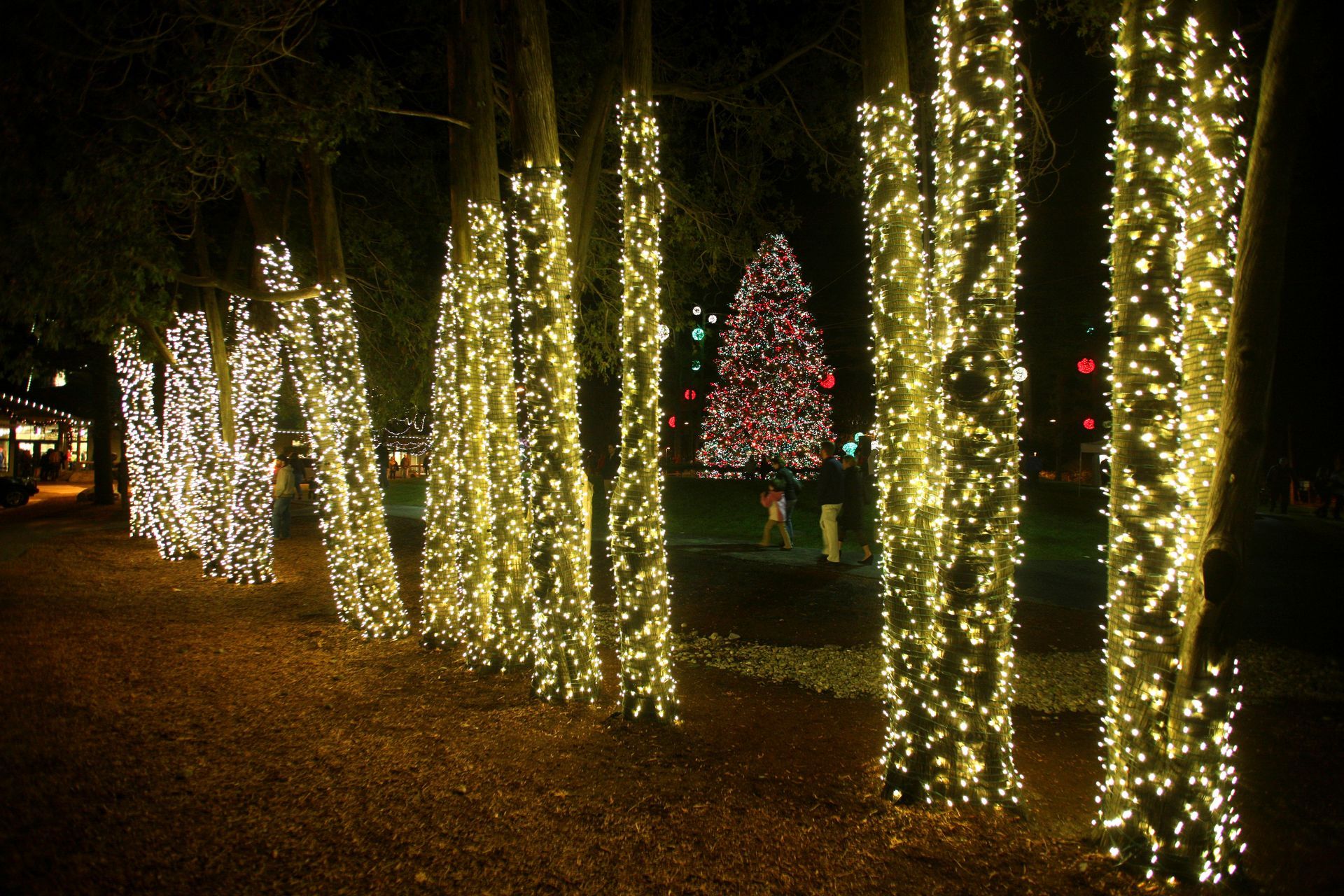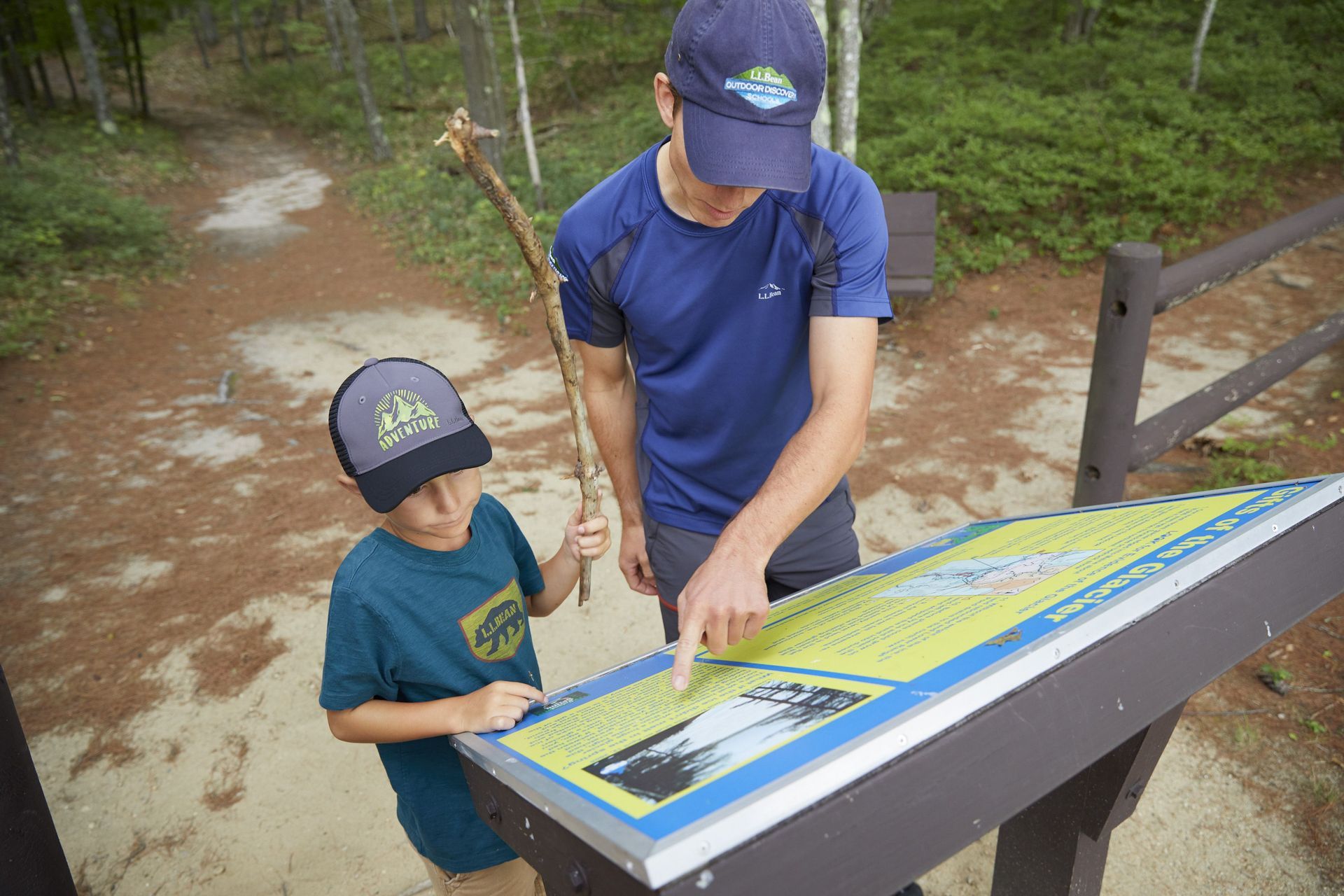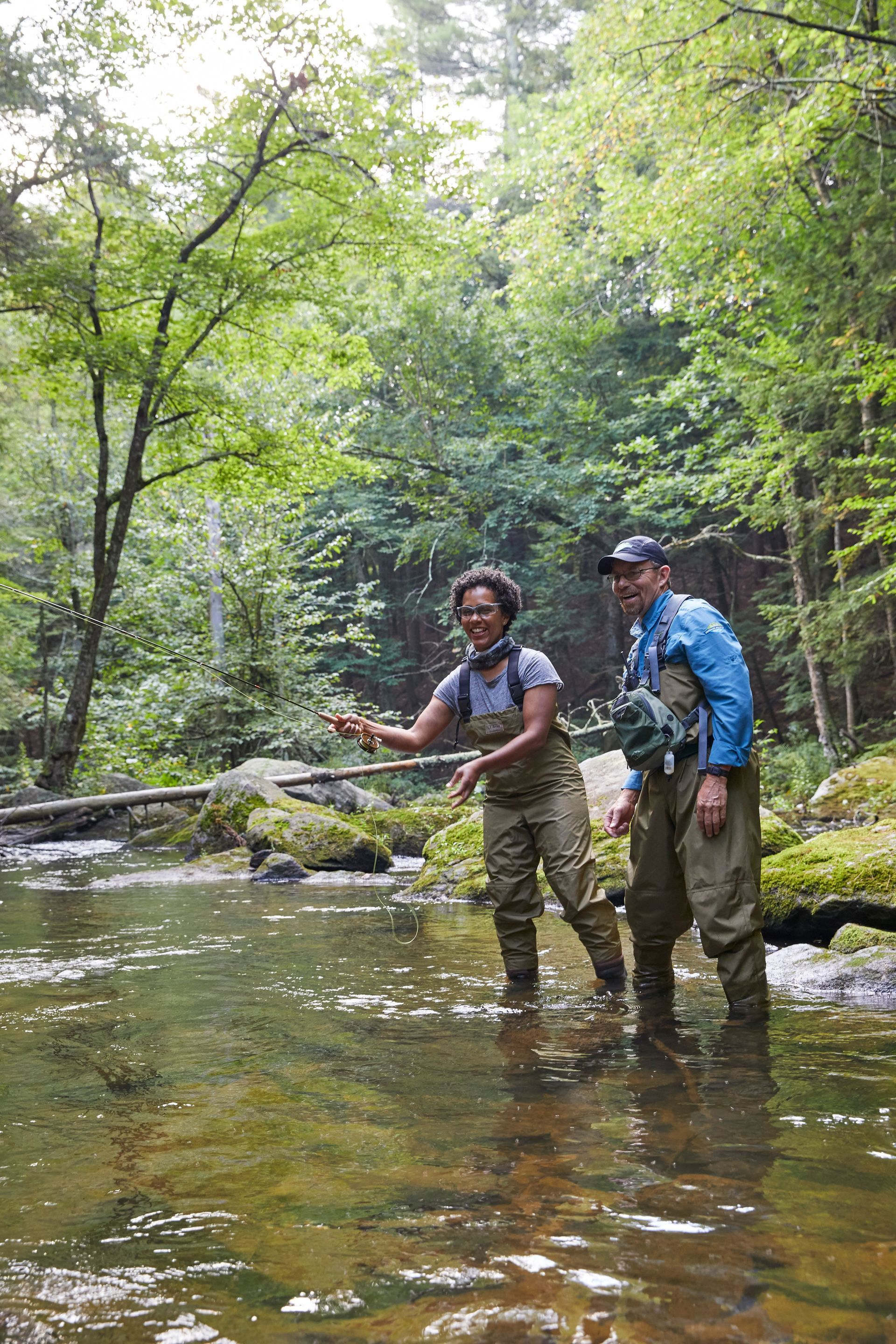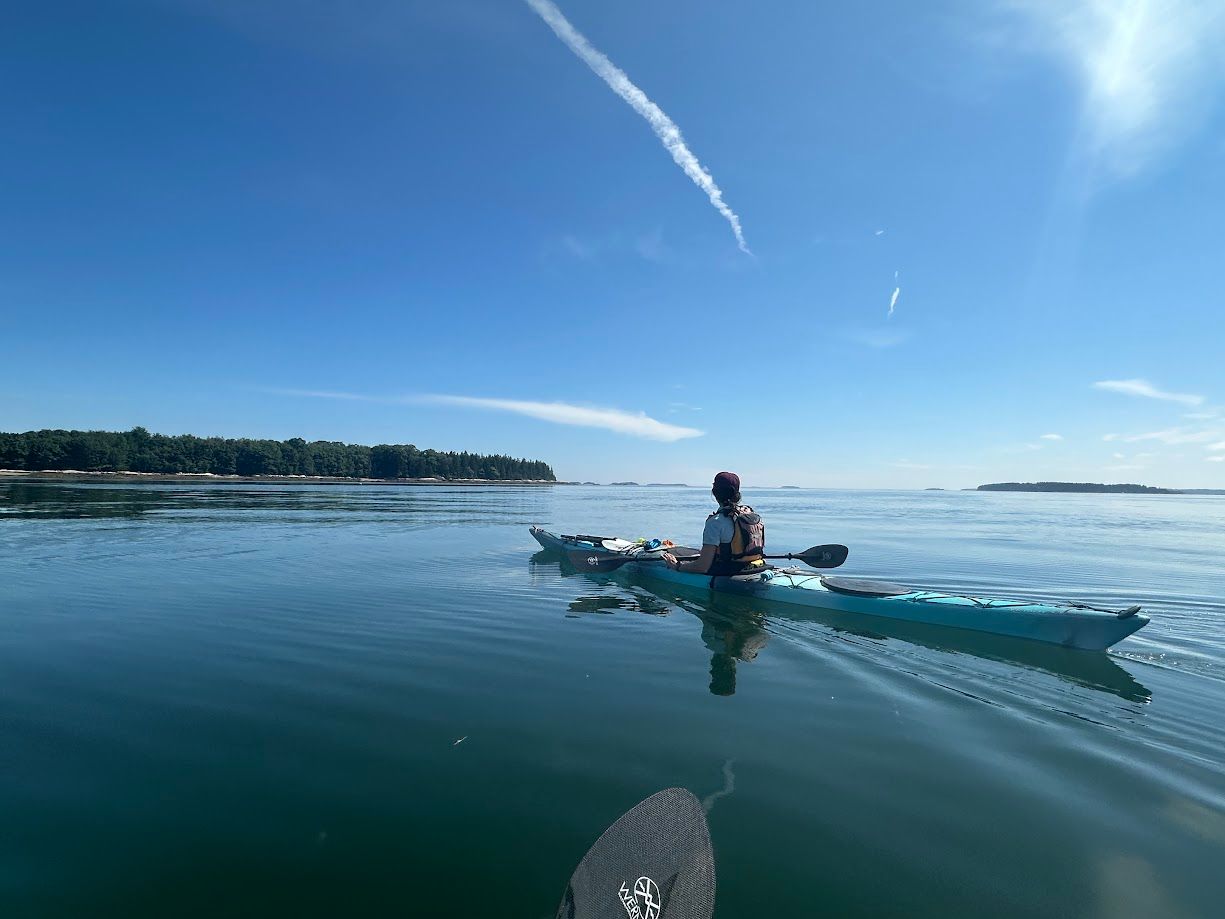A Beginner's Guide to Fly-Fishing Gear
BY STEVE J., MANAGER, ODP PROGRAMMING
If you’re ready to dive into the exciting world of fly fishing, it’s crucial to have the right gear to ensure a successful and enjoyable experience. Since different fish require different types of gear, you’ll first need to know what you want to catch. For the purpose of this guide, we’ll be talking specifically about what you need for trout fishing. You don’t need everything if you’re just starting out; just the basics will get you going. Here’s what I consider to be the “must haves” for a beginner fly fisherman.

Fly-Fishing Equipment
Fly Rod, Reel, and Line: Start with a versatile setup, such as a 9-foot, 5-weight fly rod paired with a matching reel and weight-forward floating fly line. This combination is suitable for various fishing conditions and species you’ll find in local streams and ponds. You can get packages from L.L.Bean that are already set up with the correct line on the reel for the weight of the rod.
Leaders and Tippets: Get a selection of 9-foot tapered leaders in different strengths (e.g., 4X, 5X), along with corresponding tippet material for attaching flies. The larger the X number, the finer (thinner) the leader or tippet.
In fly fishing, the bulk and weight of the fly line provides the momentum to cast the fly. Because fly line is thicker and has color, a tapered leader and a tippet are needed to avoid spooking the fish. The tapered leader is first, attached to the end of the fly line, and is translucent in color. At the end of the tapered leader, you will add a short, clear piece of monofilament called a tippet, usually about two to three feet in length. With your fly tied to the end of the tippet, the fly will present on the water and appear as if there is nothing attached to it.
When selecting your tippet, it should match or be one size (X) smaller than the leader; for example, if you have a 3X tapered leader you’ll want to use a 3X or 4X tippet.
Flies: Stock up on a variety of flies, including dry flies, nymphs, and streamers, to match the insects or baitfish in your fishing area. Dry flies sit on top of the water and mimic a flying insect or other insects that you’d find floating on top of the water (ants and beetles). Streamers are probably the easiest to learn to fish. A streamer will mimic a small fish or a large insect larva (like a dragonfly). You’ll cast the streamer out and strip line back toward you. You’ll want to ask your local fly shop what is hatching locally that the trout will feed on. Usually, you can ask others on the stream what they are using too.
Fly Box: Keep your flies organized and easily accessible with a fly box designed to hold different fly types securely. As you get deeper into the sport, you’ll collect more fly boxes and separate your flies by type in each box.
Tools: Don't forget essential accessories like line nippers, forceps, or hemostats (for hook removal), and a landing net.
Clothing & Accessories
Waders and Wading Boots: If you’ll be fishing in rivers or streams, invest in breathable waders and sturdy wading boots with felt or rubber soles for traction. Stream beds are slippery so wading shoes with good traction are a not only advised, but a lifesaver. You can wear the boots in the summer without waders if it’s warm and still get the traction. I also use a wading staff which helps crossing streams.
Apparel: Wear quick-drying clothing suitable for the weather, including a fishing shirt, pants or shorts, and a hat with a brim for sun protection. Bean’s Tropicwear shirts are time tested to keep you cool, dry, and protected from the sun, and have the pockets you’ll need to carry a fly box or two.
Sunglasses: Polarized sunglasses reduce glare, allowing you to see fish and objects beneath the water's surface more clearly. They are also good for eye protection for any wayward cast!
Hat: A wide-brimmed hat not only protects your face and neck from the sun but also helps improve visibility while casting. You can also use the brim to keep an extra fly or two for a quick change.
Safety Gear: Carry a whistle, a small first-aid kit, and a waterproof bag for your essentials, especially if you're fishing in remote or rugged areas. I always carry a “boo-boo kit” with band-aids, a bite pen, and some antiseptic. It’s small and covers most of the issues I might encounter on a day’s fishing.
Optional Accessories: Consider additional accessories like a fishing vest or sling pack for organizing gear, a waterproof camera for capturing memories, and a portable fish scale and measuring tape, and net.
By having the right gear and clothing, you'll be well-equipped to enjoy your fly fishing adventures to the fullest. Remember to check on local fishing regulations (search your state’s fish and wildlife website for local regulations, buy a fishing license) and practice casting techniques before you go. Or better yet, visit us at www.llbeanoutdoors.com to find an Outdoor Discovery Programs fly-fishing course near you!
And don’t forget to check out www.llbean.com/fishing to shop everything you need to get out there and start catching fish. See you on the water!

